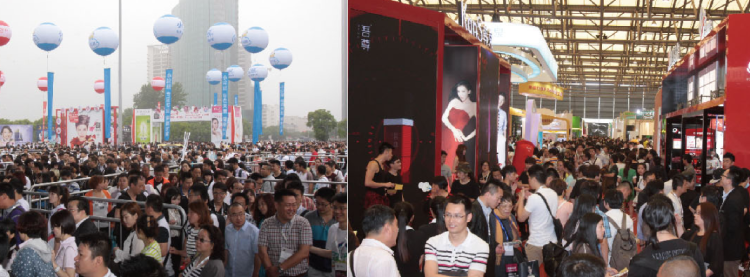As “ageing” reshapes consumer landscapes globally, the “Silver Economy” has risen significantly. Market data shows the global anti-aging products market reached $55.8 billion in 2023, with the menopause care segment projected to exceed $24 billion by 2030. China, rapidly entering an aging society, is no exception: in 2024, China’s population aged 60 and above surpassed 300 million for the first time, accounting for 22.0% of the total population. The Silver Economy’s market size in China is expected to reach RMB 71 trillion by 2025 and surge to RMB 191 trillion by 2035, accounting for nearly 10% of GDP.
In this context, viewing the “silver-haired group” as a homogeneous market is outdated. Market insights are now focusing on more precise customer segments—pre-seniors (50-64 years old) and young seniors (65-74 years old). These “New Mature Groups,” in the late stages of their careers or just entering the adaptation phase of retirement, are generally healthy, have strong consumption willingness, and are asserting their influence: Douyin saw a 1550% increase in skincare content consumption index among middle-aged and older users, and the number of Xiaohongshu bloggers aged 50+ doubled.
Paradoxically, this high-potential group’s spending on beauty has so far been far lower than that of younger consumers. The root cause largely lies in “systemic supply-demand mismatch”—existing market products fail to truly address their core pain points, and the traditional “anti-aging” narrative fails to resonate with them. The key to breaking this deadlock is to move beyond the generalized concept of “aging” and precisely focus on the core track defined by the mentally mature, disposable income-holding “New Mature Group”:
R&D Breakthroughs
Innovation is shifting from addressing superficial skin issues (like wrinkles) to targeting the biological roots of aging, especially the core cascade reactions triggered by hormonal changes.
Targeting the Biological Roots of Aging
Innovation is shifting from addressing superficial skin issues (like wrinkles) to targeting the biological roots of aging, especially the core cascade reactions triggered by hormonal changes.
Cutting-edge Technology: Microbiome and Bioavailability
Microbiome modulation is the next breakthrough. 2024 research reveals specific changes in the skin microbiota of postmenopausal women: decrease in Cutibacterium and increase in Streptococcus—opening new paths for improving skin health by actively regulating the microbiome. Emerging brand All Golden developed a waterless formula using patent-pending bio-fermented Cactus Fruit Extract instead of water, aiming to actively protect and reshape the skin microbiome.
Next-generation Technology Pipeline: Towards Aging Intervention Science
Cutting-edge technology, especially biotechnology, is becoming thefuture engine of beauty. L’Oreal’s acquisition of a microecological companyand Beiersdorf’s collaboration on research on mitochondrial autophagy, amongother major moves, mark a shift in focus from surface modification tofundamental biological intervention in aging.
Redefining the Boundaries of Beauty
Consumers over 50, based on their life experiences, can have a deeper understanding of the systematic nature of aging. Therefore, compared with artificially separating external skin care from internal health, building a seamless “beauty-health” integrated ecosystem is more likely to win their trust.
System solution upgrade
The concept of “from head to toe, inside out” is being deepened to the extreme and penetrating into long-neglected market gaps.
Barrier-free design: Ultimate Inclusiveness
The real pain points of the elderly, such as arthritis, weakened hand strength and vision decline, have made “barrier-free Design” or “Inclusive Design” the forefront for brands to demonstrate empathy and build loyalty.
From “Fighting Aging” to “Embracing the True Self”
The experienced 50+ consumer group has a higher immunity to marketing tactics and is more in pursuit of restoration and vitality. As a result, more and more brands have begun to gradually abandon terms with negative implications such as “anti-aging”, and turn to “pro-aging” or “healthy aging” – which has increasingly become mainstream in the narratives of European and American brands.
However, in the East Asian cultural circle where there is a stronger sense of anxiety about “aging”, creating new narratives that are more in line with the local cultural context, such as “elegant aging” or “intellectual beauty”, might be more realistic. This is already evident in the market strategies of many anti-aging products for mature skin in China – although they have clear functions such as anti-wrinkle, freckle removal and anti-aging that are suitable for the silver-haired group, their positioning tends to blur age to bypass the psychological barriers of consumers.
Deeper innovations are emerging: “Bio-harmonization” that respects the body’s natural rhythms, and “Psychodermatology” that focuses on emotions and skin health. And this will also trigger new thinking: How to balance overall claims and regulatory requirements? How to build true brand trust? As the efficacy of science becomes increasingly complex, is providing consumers with pure sensory pleasure another equally effective path? While solving problems, how can we avoid overly “pathologizing” them and creating new anxieties?
The answer might lie in the fact that the future is not just about “beauty”, but embracing the science of longevity, dedicated to transforming the scientific concept of “Healthspan” into accessible, efficient and enjoyable daily experiences for consumers.






